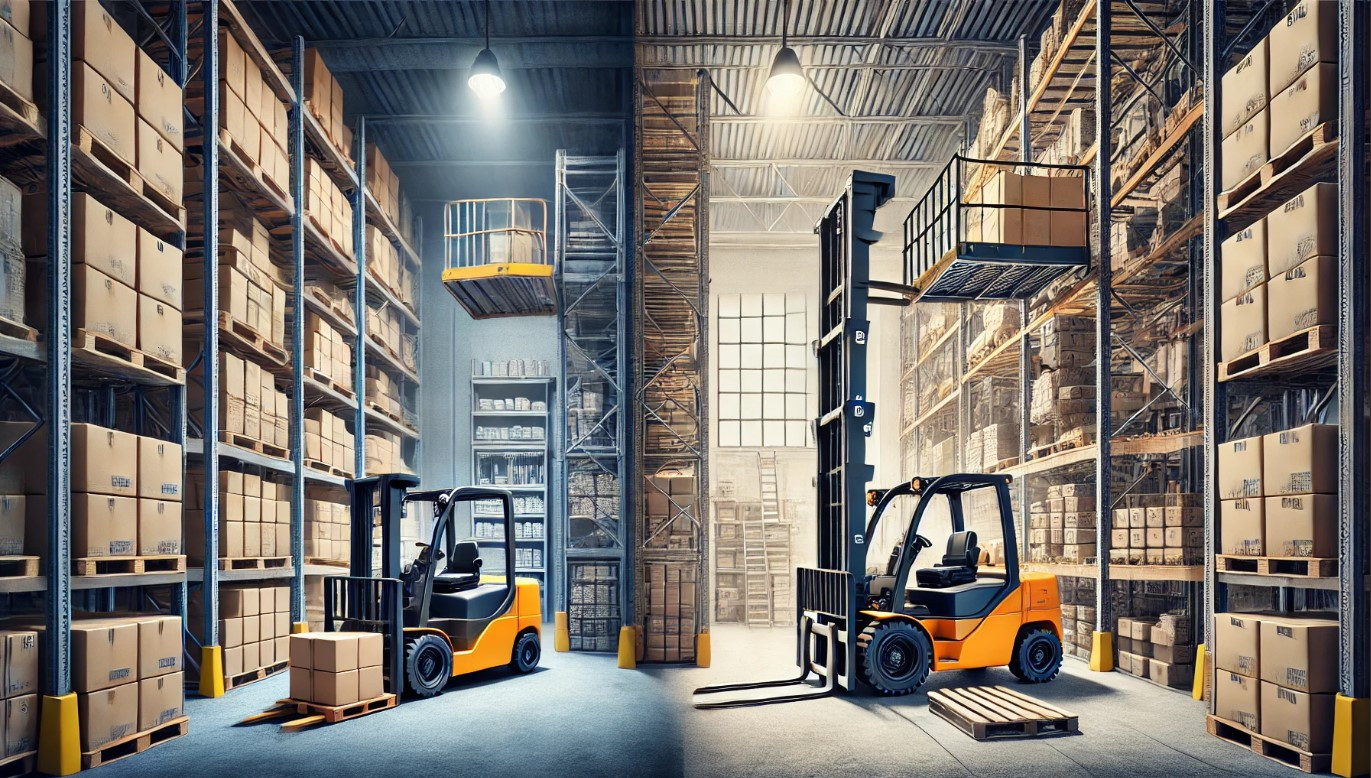Operating heavy machinery requires skill, training, and experience. While forklifts and telehandlers serve different functions, transitioning from one to the other isn’t as simple as hopping into the driver’s seat. If you’re a certified forklift operator looking to expand your skill set, obtaining telehandler certification is a logical next step. At Get Drivers Ed, we emphasize the importance of proper training to ensure safety, efficiency, and compliance with industry regulations.
Understanding the Difference: Forklift vs. Telehandler
1. Functionality and Design
A forklift is designed for lifting and transporting materials over short distances, typically in warehouses and factories. It has a smaller turning radius and operates best on smooth, flat surfaces.
On the other hand, a telehandler (or telescopic handler) is a more versatile machine with a telescoping boom that allows it to lift, extend, and move materials at different heights and distances. Telehandlers are commonly used in construction, agriculture, and heavy-duty job sites where lifting is required at multiple angles.
2. Operating Differences
Although both machines lift and transport materials, their control systems and handling techniques vary significantly. Forklift operators transitioning to telehandlers must learn how to:
Operate the telescopic boom for extended reach.
Adjust to different load capacities depending on the boom’s extension.
Navigate rough terrain, unlike forklifts that operate on flat surfaces.
This is why enrolling in a telehandler certification course is crucial for forklift operators aiming to expand their career opportunities.
The Importance of Additional Telehandler Training
1. Safety Precautions and Risk Reduction
Operating a telehandler without proper training increases the risk of tipping over, losing load stability, and accidents due to improper boom handling. Training provides in-depth knowledge of:
Weight distribution and load balancing
Safe lifting techniques and boom extension control
Understanding ground conditions and stability factors
At Get Drivers Ed, our telehandler training covers these aspects to ensure operators handle equipment safely.
2. Compliance with OSHA and Industry Standards
Just like forklifts, telehandlers fall under strict Occupational Safety and Health Administration (OSHA) regulations. Employers require operators to complete approved training programs to meet compliance requirements.
Failure to comply can result in hefty fines, job-site shutdowns, and increased liability risks. Obtaining certification from Get Drivers Ed ensures operators meet industry standards and enhance workplace safety.
3. Expanding Career Opportunities
Holding both forklift and telehandler certifications opens doors to various job roles in:
Construction and infrastructure projects
Agricultural operations
Warehouse and material handling industries
Oil and gas sector
Many employers seek workers with versatile skills who can operate multiple types of equipment. Adding a telehandler certification can increase earning potential and make job candidates more competitive in the workforce.
How to Get Your Telehandler Certification
1. Enroll in an Accredited Training Program
Choose a recognized training provider like Get Drivers Ed to ensure your certification meets industry requirements. Our program covers:
Equipment inspection and maintenance
Safe operating procedures
Hazard recognition and accident prevention
2. Complete the Theoretical and Practical Training
Training typically includes classroom instruction and hands-on operation. Operators must demonstrate their ability to handle a telehandler safely, navigate different terrains, and lift loads efficiently.
3. Pass the Certification Exam
A final assessment and practical evaluation ensure that operators are competent and confident in handling a telehandler before receiving their official certification.
Conclusion: Take the Next Step in Your Career with Get Drivers Ed
Transitioning from a forklift to a telehandler requires additional training, but the benefits are undeniable. Enhanced safety, better job prospects, and compliance with industry standards make telehandler certification an essential step for career growth.
If you’re ready to broaden your skill set and increase your job opportunities, enroll in a telehandler certification course with Get Drivers Ed today! 👉 Get Certified Now!


